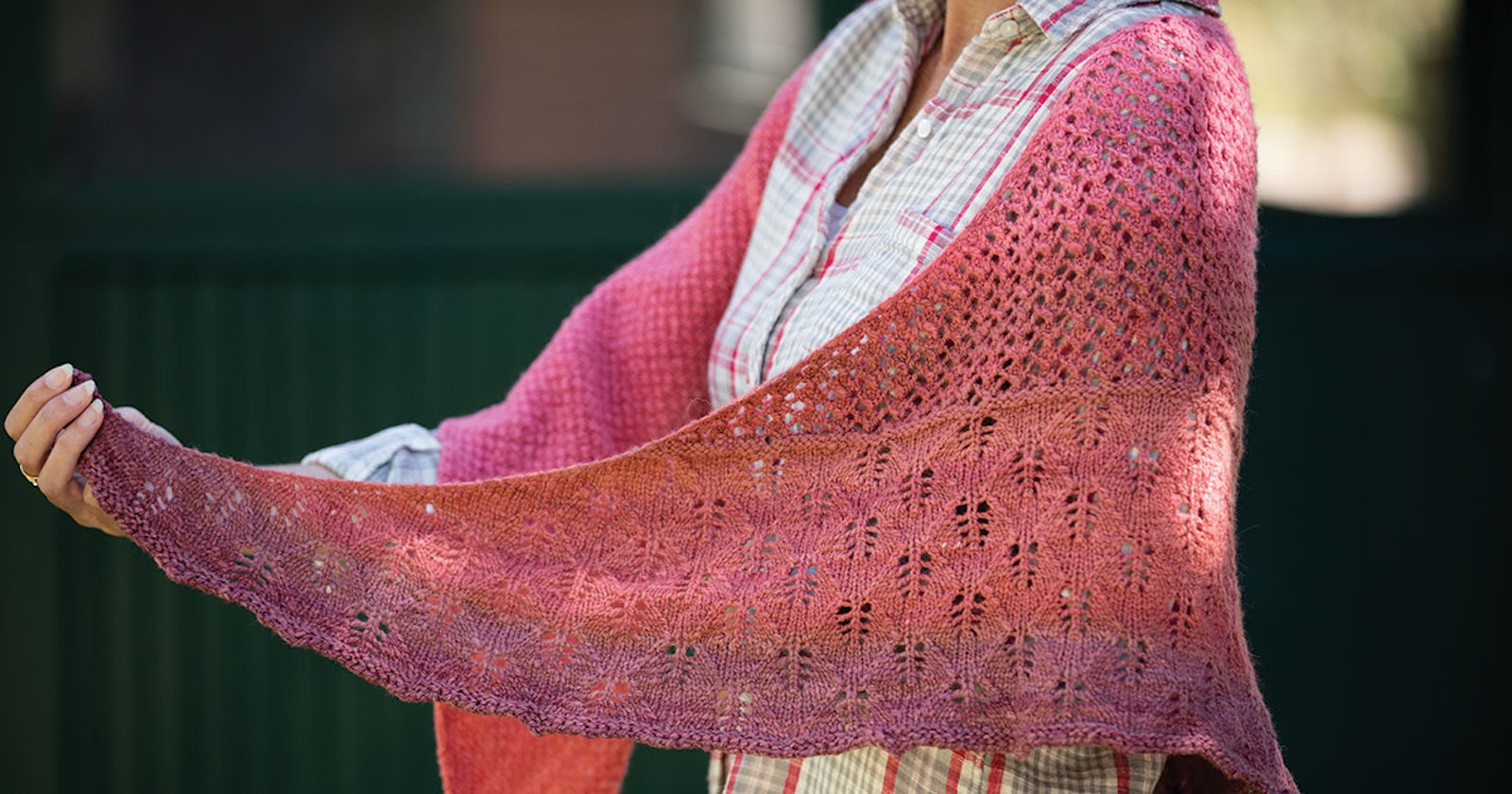I’ve been eyeing those braids of gorgeous ombre spinning fiber lately . . . and wondering how to do them justice! It often takes extra work for a dyer to create a perfectly smooth gradient of handdyed top, and spinning it to preserve that arrangement takes some special techniques. Here are a few strategies for spinning gradient yarn:
1. Singles
This is the most obvious use; just spinning a braid from one end to another certainly preserves the color progression. Obviously, your choices for predrafting (if you do it) are limited; stripping the top end to end and then spinning it in sections one after another would make lots of shorter ombre sections.
Letting the colors of the two plies progress at their own paces creates a marled effect in two-ply.
2. Plan for plying
If you have one braid, you can divide it as evenly as possible down the middle, spin each half onto a separate bobbin, and make a 2-ply yarn. (For a 3-ply, 3 strips, and so forth.) There are decisions to make here:
How hard do you try to make the plies match up in color? If it’s important that the yarn resembles the braid perfectly, you may need to break one strand and splice it to keep them matching up. But if one ply gets ahead of another a little, it can make a beautiful marl pattern.
It’s not just color matching up that you need to consider, though. It’s nearly impossible to split a length of top perfectly evenly, so one part will probably have more fibers than the other. Even if you could divide it perfectly, any difference in spinning will make one ply longer than the other, disarranging the colors.
If you’re not fussy about it, so be it. But to help make the plies as even as possible and match up the colors when spinning and plying, make a control card that preserves a length of singles and a plyback sample.
For our blue version of the Cenote Shawl from Spin + Knit 2017, Elizabeth Prose used a control card and spun evenly but decided not to control the color matching between the plies too actively.
Beginning at the narrow point, the Cenote Shawl grows from plain moss stitch to an elegant lace pattern. Elizabeth Prose spun Wooly Wonka Fibers 80% Merino/20% silk combed top in the Mendocino colorway for the version knit by Deb Gerish.
Knitting
Making the shawl was a team effort; after Elizabeth finished the spinning, Former Love of Knitting editor Deb Gerish knitted the shawl. Here’s her take:
“I’ve been spinning for about 25 years, and in all that time, I’ve used my own handspun instead of someone else’s. I’m also not the most consistent spinner, nor am I capable of making a 2-ply fingering without intense concentration that kind of undercuts the zenlike relaxation of spinning. So it was a real treat to knit something with somebody else’s handspun. Elizabeth did a fantastic job of spinning and plying consistently. That made the knitting much more enjoyable—sometimes when I knit with my own handspun, I mentally kick myself for not taking more care in the previous stages.
“The pattern thrilled my knitter’s soul: lacy shawls rank among my favorite types projects, but these days I don’t make them often. Anne Podlesak used a different stitch pattern on each of the three segments of this wrap, which kept me from getting bored. I especially loved watching the colors develop through their gradient range. Elizabeth mentions that she let colors overlap while she was plying, and she was right to do so—these sections of the shawl really developed the gradient colors.
“Knitting moved along pretty quickly, and I love the graceful curves on two of the edges. When blocking, I aligned the straight line with my mats, pinned carefully, and then let the other sides swoop as they wished.”
—Anne Merrow
Featured Image: Transitions in color and pattern make the Cenote Shawl a joy to spin and knit. Photos by George Boe
Posted November 16, 2016. Updated June 27, 2019.



